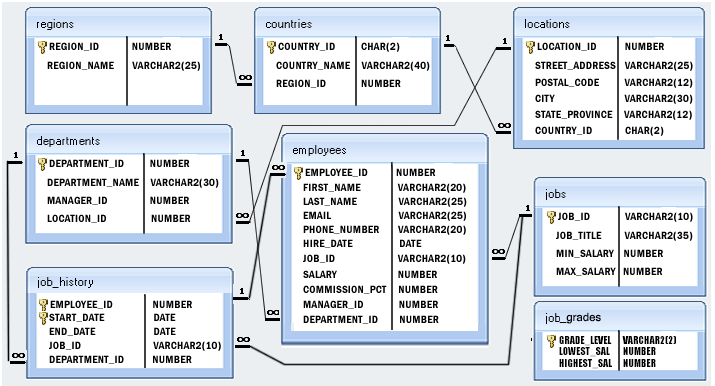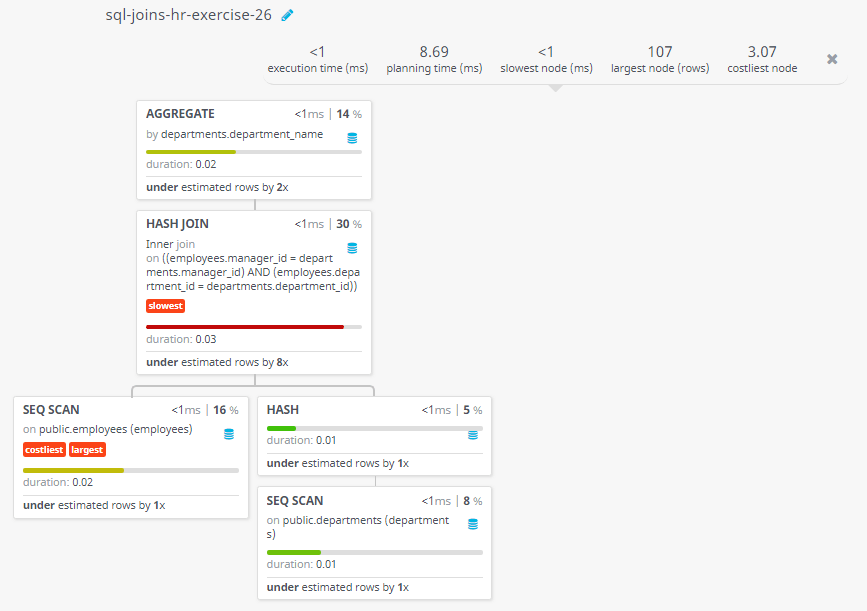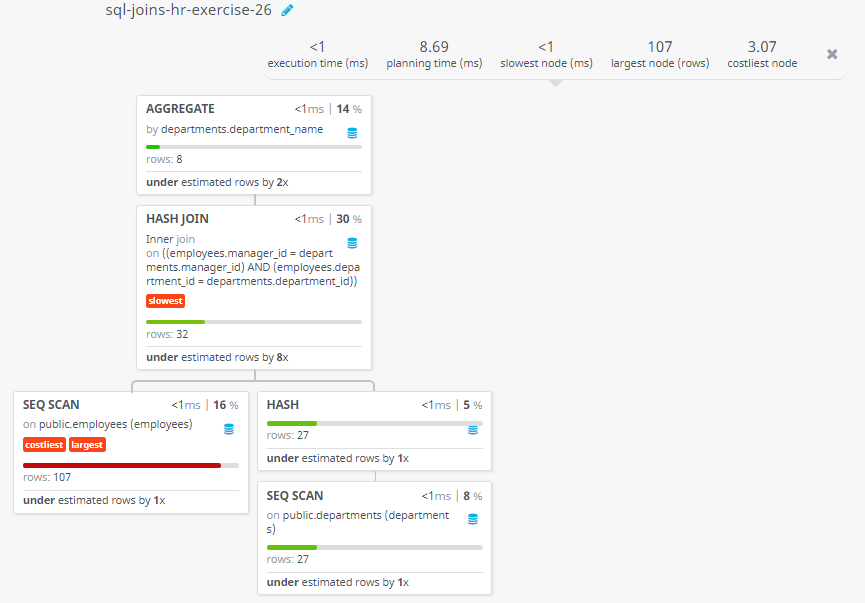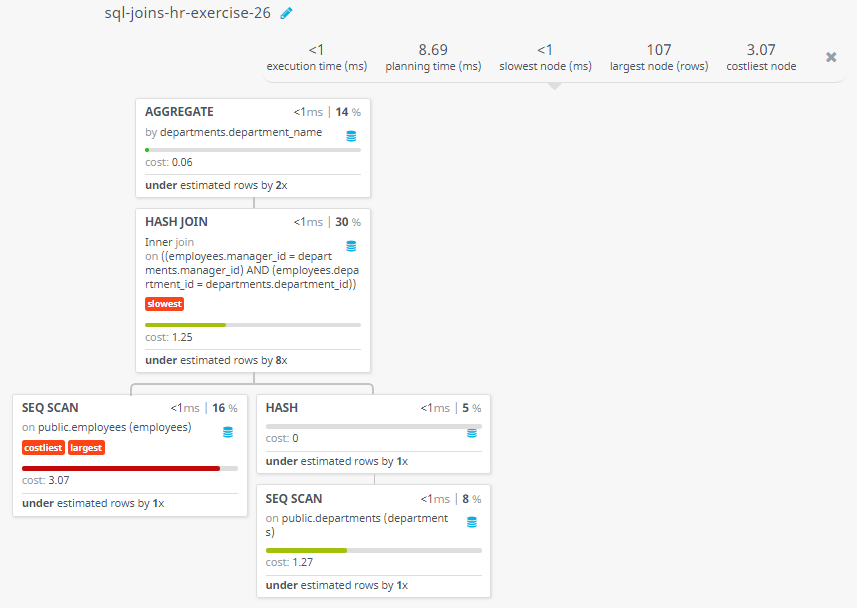SQL Exercise: Number of employees in each of the department
26. From the following tables, write a SQL query to find the department name, department ID, and number of employees in each department.
Sample table: departments
Sample table: employees
Sample Solution:
-- Selecting specific columns (d.department_name, e.*) from the 'departments' table, aliased as 'd', and performing a join with a subquery, aliased as 'e'
SELECT d.department_name,
e.*
-- Joining the 'departments' table (aliased as 'd') with a subquery (aliased as 'e') that calculates the count(employee_id) and department_id grouped by department_id from the 'employees' table
FROM departments d
JOIN
(SELECT count(employee_id),
department_id
FROM employees
GROUP BY department_id) e USING (department_id);
Sample Output:
department_name no_of_employees department_id Administration 1 10 Marketing 2 20 Purchasing 6 30 Human Resources 1 40 Shipping 45 50 IT 5 60 Public Relations 1 70 Sales 34 80 Executive 3 90 Finance 6 100 Accounting 2 110
Code Explanation:
The said query in SQL which will return a list of department names and employee counts for each department, based on data from the departments and employees tables.
Starting with the department name from the departments table, a subquery selects the number of employees and department IDs for each department. The subquery uses the COUNT aggregate function to count the number of employee IDs for each department, and groups the results by department ID using the GROUP BY clause.
The query then joins the result of the subquery with the departments table on the department ID using the USING clause.
Go to:
PREV : Employees worked without a commission percentage.
NEXT : Display the employee with ID and present country.
Practice Online
Query Visualization:
Duration:
Rows:
Cost:
Have another way to solve this solution? Contribute your code (and comments) through Disqus.
What is the difficulty level of this exercise?
Test your Programming skills with w3resource's quiz.




